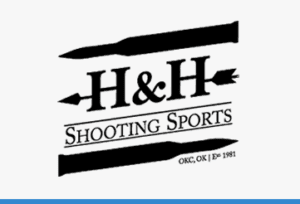Cook County, Illinois quietly took another step toward it’s becoming a retail-free zone last Friday. The commission passed a 2013 budget that included the much-discussed $25 per firearm tax for any gun sold there, but they didn’t stop there.
The reasoning behind the “violence tax” according to Board President Toni Preckwinkle is “gun violence is a real problem for us.” Her “us” meant politicians, and Cook County’s criminal justice and the health care systems.
How’s that, you ask?
According to Preckwinkle, the “average shooting victim” in costs taxpayers “$52,000 in acute care because nearly 70 percent of the victims don’t have health insurance.”
I’m not going anywhere near the sociological implications of such a statement, but it is worth noting that Chicago (where gun sales are banned) has a murder rate that’s up 25 percent for the year.
So…gun owners have been lumped in with other “sinners”. That includes smokers (Cook County’s 2013 budget will charge $6.67 per pack for smokes-making prices $10 + per pack) and gamblers (they also approved a tax of $1,000 per slot machine and $200 per video gambling machines).
What Madame Preckwinkle seems to have overlooked is the fact that while these taxes may seem sensible, reasonable and responsible to her, they aren’t inspiring for Cook County merchants.
Cabela’s, for instance, has a retail store in Hoffman Estates. They’ve already stopped using nearly half their retail space due to high property taxes. Maybe now they’ll consider writing off what is an excellent retail space -or donate it to charity- and head for a more welcoming location.
By April 1, 2013 (the effective date of the taxes), I’d hope it extremely difficult to find retailers offering firearms, cigarettes, or video gambling in Cook County. I’d like to see Preckwinkle in the position of having to explain why tax revenues have dropped -but crime hasn’t.
Nationwide, conversations about the country’s imminent financial crisis is being overheard in long lines of consumers. Many of those long lines are in gun shops.
Speaking with retailers of all sizes around the country, I’m hearing buying at a historic high-even when compared to 2008. But it isn’t the panic-style buying that accompanied Mr. Obama’s first election. Instead, it seems to be consumers focused on staying ahead of shortfalls that may be coming down the pike-and growing concerns for their own safety as service cuts impact first responders nationwide.
In Oklahoma City, Miles Hall of H&H Shooting Sports says he’s not seeing what he characterizes as “over buying”. Instead, consumers are buying normal 2-4 box quantities of ammunition, not the 1,000-round cases that flew off the shelves in other regions. In Birmingham and Huntsville, Alabama, for instance, ammo supplies quickly depleted following the election.
Hall suggests that one reason for orderly selling is dealers having anticipated a possible post-election rush and stocked up on product and having sales staff ready “just in case.” Those who bought larger-than-normal quantities seem to have guessed correctly.
Here are a few of the common themes we’re hearing:
The thirty-somethings are still buying, but aren’t dominating purchasing. Buyers are cutting across any demographic lines you care to use.
Modern sporting rifles are selling – briskly- but handguns are dominating sales. Some stores say handgun sales are three to four times higher than rifles.
Retailers also say that should Mr. Obama and Senator Feinstein move on the “assault weapon ban” whispered about in Washington, those numbers could quickly flip.
Sales of “enhanced-capacity” magazines are brisk, dealers are already looking to suppliers for additional inventory.
Ranges have never been busier. Hall reports that the H&H Ranges are at capacity only minutes after opening. They’re “standing room only” throughout the day.
That’s echoed across the country.
And Hall pointed out another local trend: gunsmiths reportedly being overwhelmed with guns coming in for deep-cleaning and/or maintenance.
Asking around, it seems to be the case even in areas where hunters aren’t prepping- gun owners nationwide seem intent on making certain their guns are in good working order.
Distributors also say inventories of gun parts and reloading components are dropping.
It looks like 2012 will be characterized by double-digit growth for gun sales in most areas and low triple digit growth in particularly “hot” locations when compared to 2011.
2011’s numbers were higher than the “panic buying numbers” of 2008.
Some of the buying is due to political concerns. But recent newcomers continue buying second – or third- guns because they’ve discovered they really enjoy shooting.
They say fun, not fear, fuels their purchases.
Sustaining superheated growth levels doesn’t seem realistic. The American consumer is fickle even in good times. Hot right now might not translate to in-demand in just a few weeks (think grain mills and raw wheat in 1999).
This boom does continue to offer a rare opportunity for the sporting community to reach convert new buyers into advocates for shooting sports.
We do that by talking to them about the fun of shooting – not the end of the world as we know it.
Last week’s election has driven home the point that industry “givens” when it comes to politics and social values might might not reflect the views of the younger generation as a whole.
–Jim Shepherd


